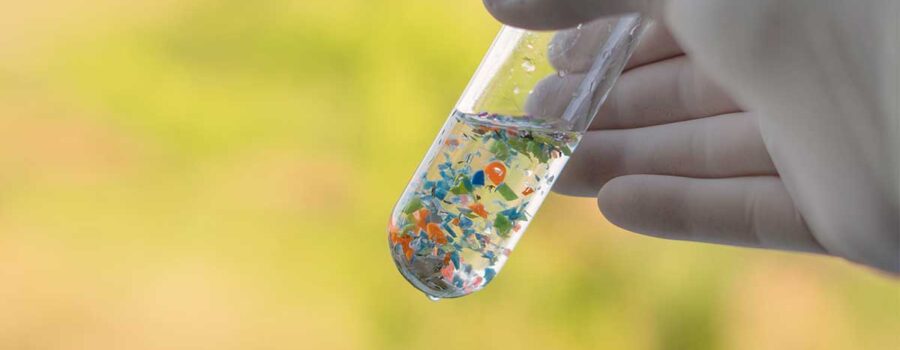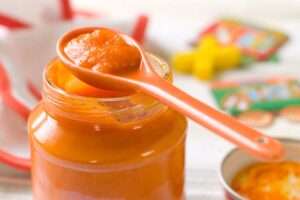Guess what? Our environment is so filled with microplastics that they’ve found their way into some pretty surprising places – like our testicles! Yep, you read that right. A recent study discovered microplastics in 100% of the testicles they tested from 23 men and 47 dogs.[1] It’s pretty wild to think about, but it makes you wonder: could this be affecting our health in ways we haven’t fully understood yet?
How Do Microplastics Get Inside Us?
So, how exactly do these tiny bits of plastic end up inside our bodies? There are three main ways: we breathe them in, we eat and drink them, and they get absorbed through our skin.
Breathing It In
Microplastics can float around in the air, coming from things like synthetic textiles, industrial processes, and even the breakdown of larger plastic items. When we breathe in these particles, they can get stuck in our respiratory system, potentially causing some not-so-great health effects.[2]
Eating and Drinking It
Ever thought about how much plastic you might be consuming? Microplastics have been found in a variety of foods and drinks – everything from seafood to table salt to bottled water. These tiny particles make their way into our food chain, and before you know it, we’re ingesting them. Once inside our digestive system, they can cause who knows what kind of damage.[3]
Absorbing It Through Our Skin
Microplastics aren’t just in the air and our food – they’re also in some of the personal care products we use every day. Think about exfoliating scrubs and certain toothpastes that contain microbeads. Plus, synthetic clothes like polyester can shed microplastics that get absorbed through our skin.[4]
What Does This Mean for Our Health?
The big question is, what do microplastics do to our bodies once they’re inside? There’s still a lot we don’t know, but the research so far suggests that they can cause inflammation, disrupt our hormones, and even lead to cellular damage.
When it comes to reproductive health, the fact that microplastics are hanging out in our testicles is particularly concerning. Scientists are looking into whether these particles might be part of the reason why sperm count and quality have been dropping over the years. It’s a serious issue, but one that’s still being untangled by researchers.
How to Reduce Exposure
While we can’t completely get rid of microplastics, there are definitely some things we can do to limit our exposure. Here are a few practical tips:
- Swap Out Plastic: Try to replace plastic items with alternatives made from glass, stainless steel, or other non-toxic materials. Using glass or stainless steel water bottles and food containers is a great start.
- Choose Better Water: Since tap water can contain microplastics, consider using reverse osmosis (RO) filtered, distilled, or spring water to cut down on plastic particles in your drinks.
- Ditch the Plastic Daily Use Items: Reduce the use of plastic cups, cutting boards, and storage containers. Bamboo, wood, and silicone are awesome alternatives that don’t contribute to microplastic pollution.
- Look for Microplastic-Free Salt: Some brands of salt contain microplastics, so choose ones labeled as microplastic-free. Sea salt and rock salt from trusted sources are usually safer bets.
- Go Natural with Clothing: Synthetic fabrics like polyester shed microplastics every time you wash or wear them. Opt for clothing made from natural fibers like cotton, linen, and wool to reduce this exposure.
- Improve Your Air Quality: Invest in a good air filter for your home. HEPA filters are particularly effective at trapping small particles, including microplastics, which can improve the air quality in your living space.
Conclusion
It’s pretty eye-opening to realize how pervasive microplastics are in our lives, even showing up in places we wouldn’t expect. While we can’t avoid them entirely, making some simple changes in our daily routines can help reduce our exposure. By being mindful of what we use and how we live, we can protect ourselves and our families from these tiny invaders. And hey, it’s all about doing the best we can in this plastic-filled world!
References:
- Parshall, Allison. “Human and Dog Testicles May Be Full of Plastic. Could That Affect Fertility?” Scientific American, https://www.scientificamerican.com/article/are-the-microplastics-found-in-testicles-a-health-danger/. Accessed 29 May 2024.
- Uffelen, Carina van. “How Damaging Is Breathing in Microplastics?” Plastic Soup Foundation, 22 Mar. 2018, https://www.plasticsoupfoundation.org/en/2018/03/how-damaging-is-breathing-in-microplastics/.
- How Plastic Has Entered the Food Chain.” Plastic Soup Foundation, https://www.plasticsoupfoundation.org/en/plastic-problem/plastic-affect-animals/plastic-food-chain/. Accessed 29 May 2024.
- US Department of Commerce, National Oceanic and Atmospheric Administration. What Are Microplastics? https://oceanservice.noaa.gov/facts/microplastics.html. Accessed 29 May 2024.








